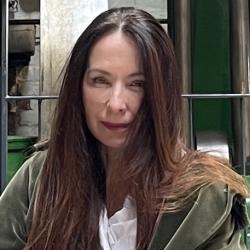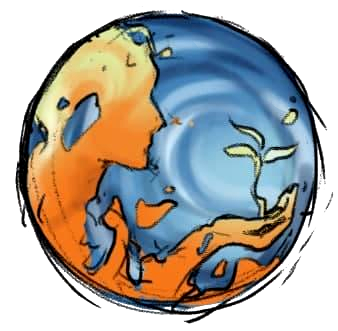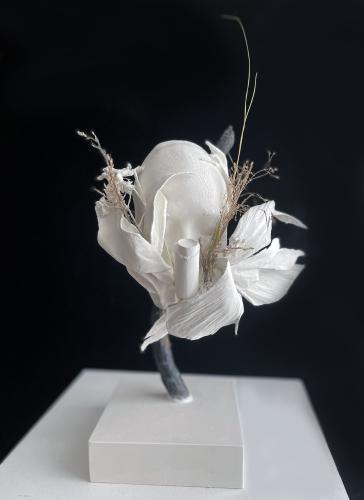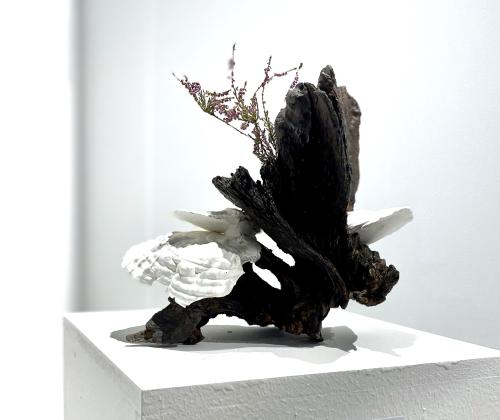Dr. Jasmine Pradissitto

Dr. Jasmine Pradissitto
Jasmine Pradissitto is an award-winning London-based British artist, scientist, academic, and speaker who has a Ph.D. in physics from UCL and has studied art at Goldsmith’s. A polymath (LIS Fellow), her critical practice spans painting, sculpture, and technology and she is the only artist in the world licensed to use NOXORBTM, a newly developed ceramic material that absorbs nitrogen dioxide (NOx) pollution from the air. Pradissitto has exhibited worldwide, most recently in Aby Dhabi as part of the green Art Expo and has installed two pioneering public art projects in London for The Horniman Museum Gardens (winner of Museum of the Year Award 2022) and Camden People’s Theatre with Euston Town, a Mayor of London environmental initiative (PEA AWARD 2021). Her work based on future innovations (and new modes of thinking), cross-fertilised with the traditional, is less about the narrative of our past planetary ingressions and more about our symbiotic adaptation to a post-industrial, anthropogenic world; something she is now exploring as part of her first museum solo show in 2025 with The London Water and Steam Museum.
Artist Statement
‘Attention is the rarest and greatest form of generosity: We have to try to cure our faults by attention and not by will’. Simone Weil.
....Yet there is more competition now than ever for our attention. Without attention, we fail to sense purpose or to notice the degradation of the world around us, or the loosening bonds of community or that we already have many of the sustainable solutions and innovations we need for adaptation to a new Symbiocene. It fulfills a never-ending need for meaning, with an empty hit of ‘consumption’. And I believe and is one of the reasons that after 300 years of industrially led progress, a progress that is now exponentially accelerant, we find we are regressing and destroying the only home we have ever known.
But there is hope in ‘awe’.
Awe is to be found in art and poetry, the edge of leaves against sharp skies, an act of kindness, or natural phenomena we know as ‘Science’. It’s the same awe we find in accepting the ‘space between things’ a ‘Coincidence of opposites’. It’s what drove the first Renaissance, what could drive the next and it is what helped me find new uses for old materials. I now realise that doing the research for a Ph.D. has always led me to find new ways of using established materials or thinking. Innovation is at the heart of my work.
A polymath, sometime described as a ‘Renaissance Woman’, I once researched for a physics Ph.D. in the day whilst studying art in secret at night. My critical practice spans painting, printing with plants, sculpture using ceramic and natural found materials, as well as technology such as 3d printing and AI. Classically trained, over the last 7 years, I have been the only artist in the world to pioneer a newly developed, sustainably sourced ceramic ‘Noxorb’, developed by Mantis Innovation, that absorbs nitrogen dioxide (NOx) pollution from the air. A by-product material not intended for sculpture, it absorbs vast quantities of the brown by-product of combustion and intensive agriculture that we see in city sunsets. It’s also the pollution that also stops pollinating insects find their flowers or indeed for those flowers to be able to grow at all and led to my first two award winning public installations ‘Breathe’ 2021 and ‘Flower Girl who will awaken upon the buzzing of the bees’.
The success of these projects started to help me understand the deep complexities of climate change, adaptation, water, soil, and plant conservation and that all of it was dependent on our perception and perspective. And the visual is how we make these as tangible as is possible . As a result, more recently I have been on projects exploring natural habitats globally from the remnant prairies in the USA to the Alpine meadows and most recently the desert in Abu Dhabi. This has led to an even greater interest in biomimicry and conservation as a way of eliciting the awe which can drive more sustainable behaviour.
And just as nature is circular so has been my path. From science to art, to all subjects finding the dots that join them. I have always believed artists are some of the most original systems thinkers. And that will be at the heart of the behavioural changes which will make more sustainable practice almost second nature. Now an Artist in Residence at the London Water and Steam Museum in London working towards my first museum show, the narrative will bring together opposites; filling a steam museum that was once at the heart of the Industrial Revolution with sculptures that absorb the very pollution it created, or with paintings printed with plants that were once hunted.
Paradoxically, in an era of digital supremacy, it is through the ‘analogue’ of our bodies which allowed us to survive long enough to evolve, that I believe we can once again create a second Renaissance.
Their Content
-
Rewilding
Dr. Jasmine Pradissitto -
Corpus Callosum
Dr. Jasmine Pradissitto


